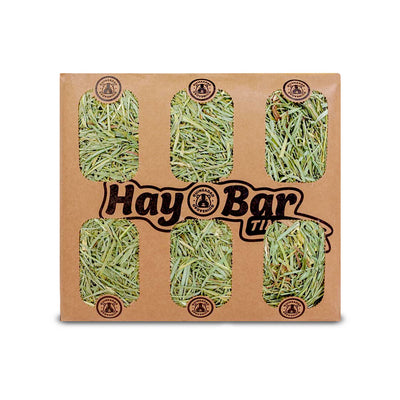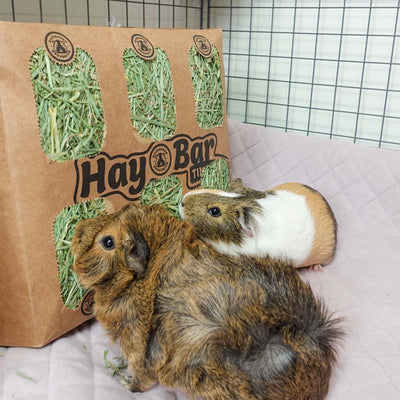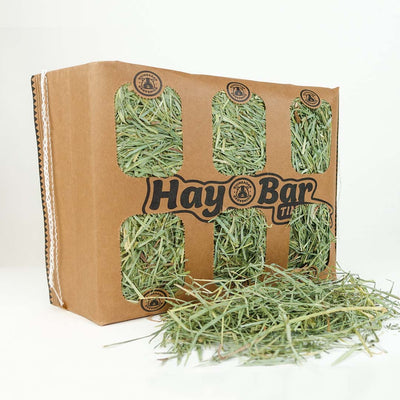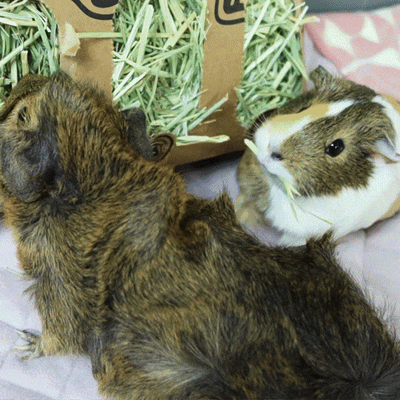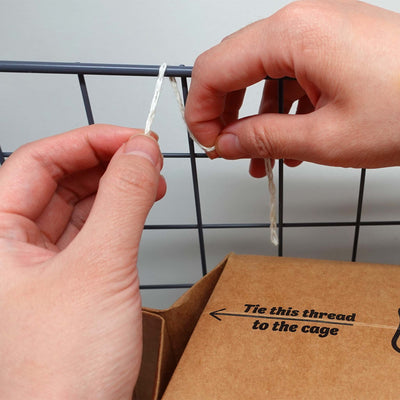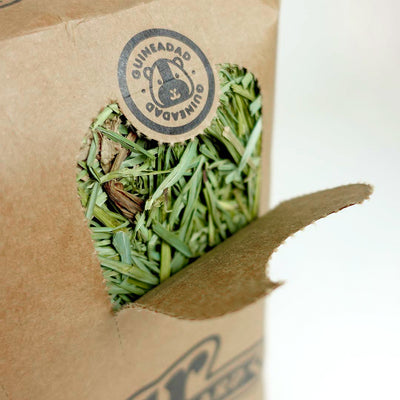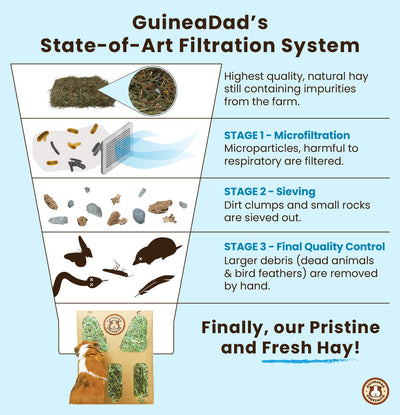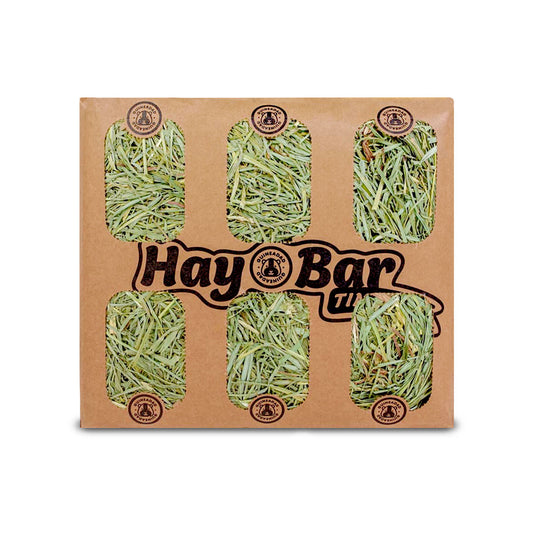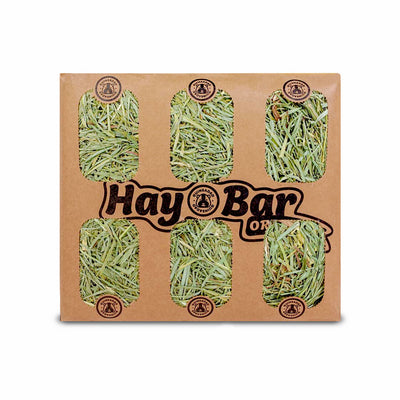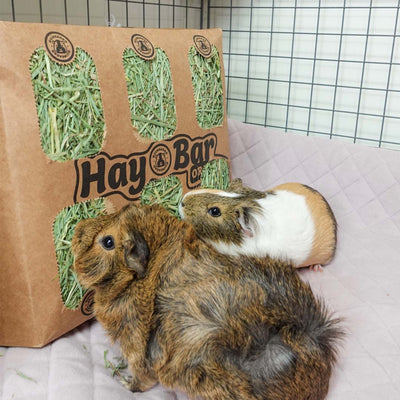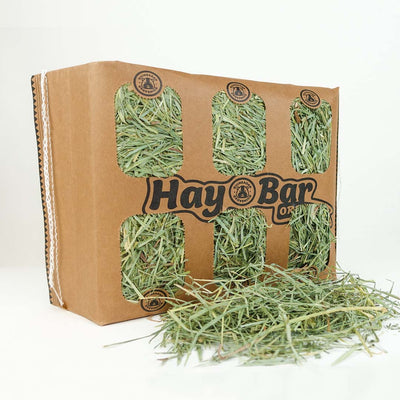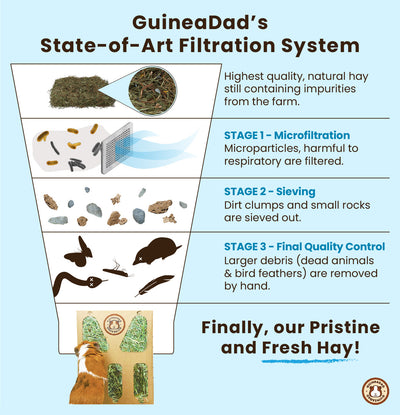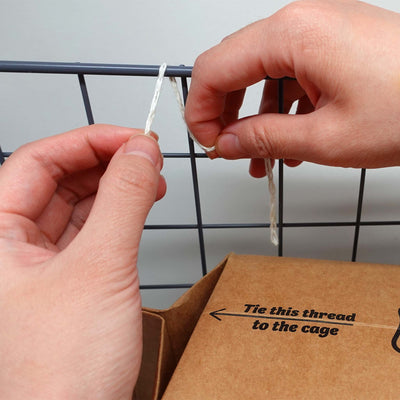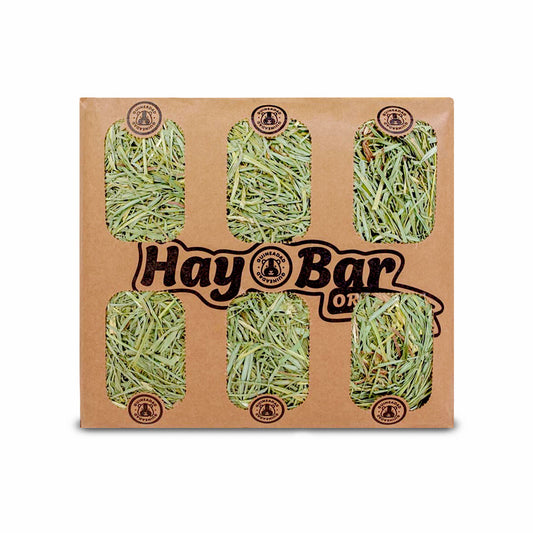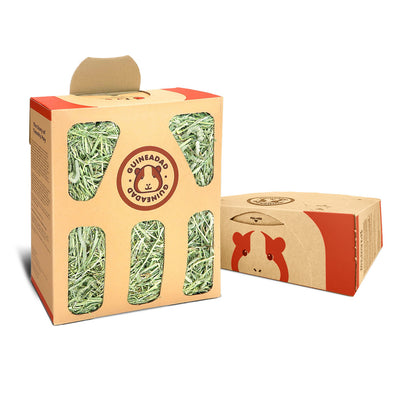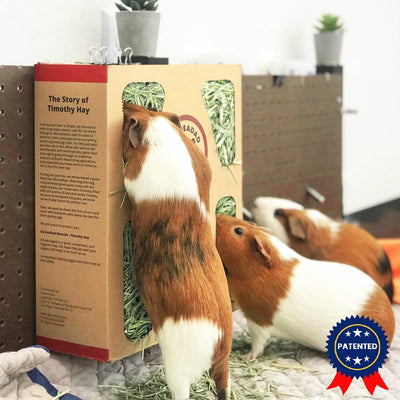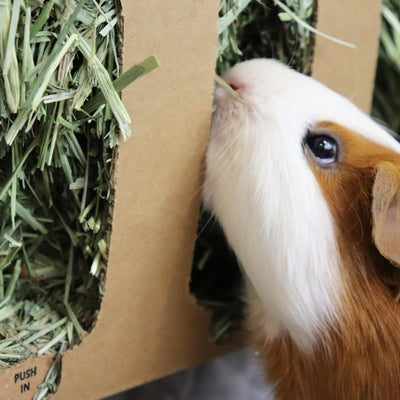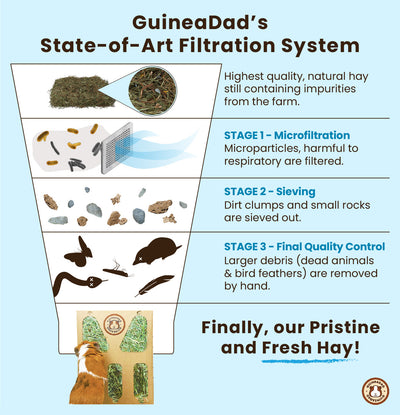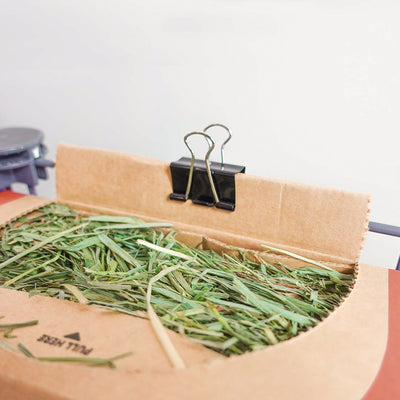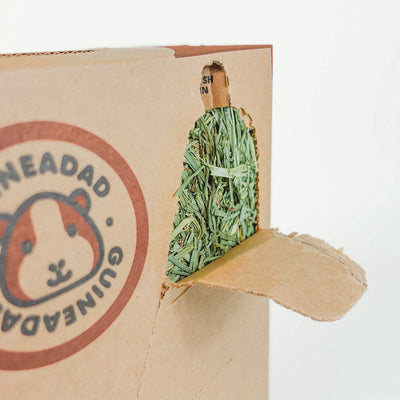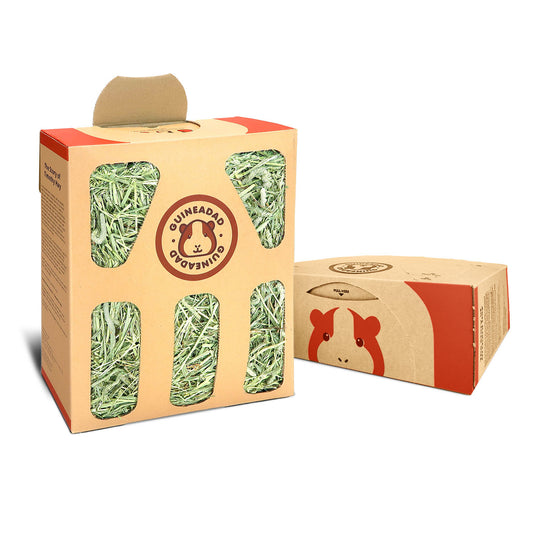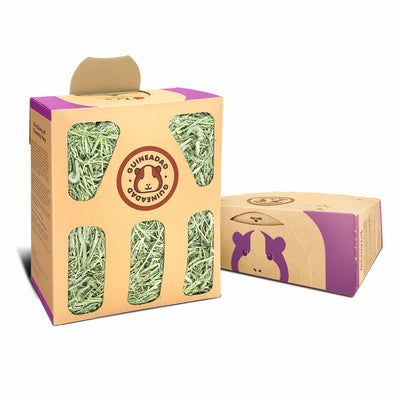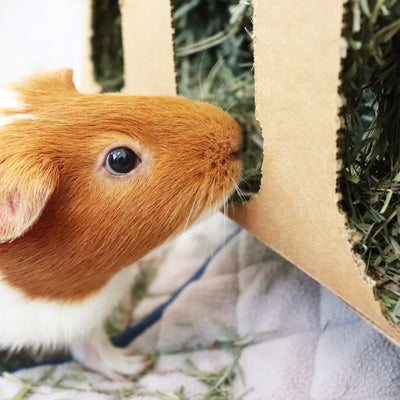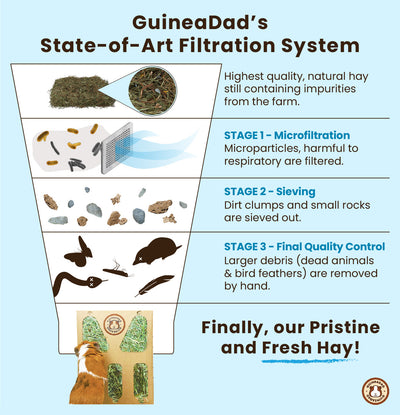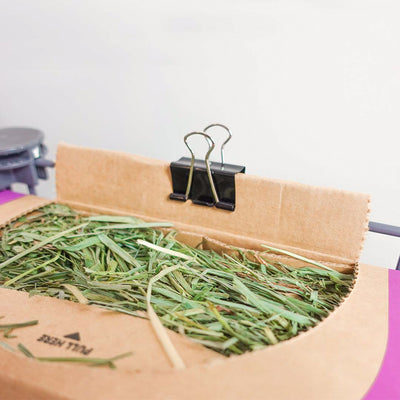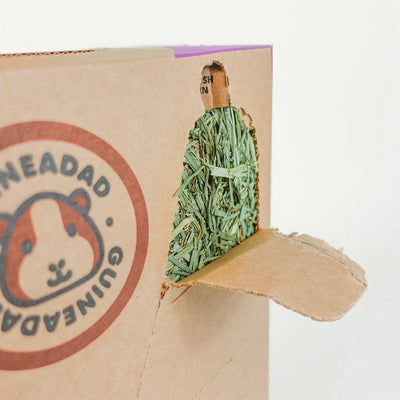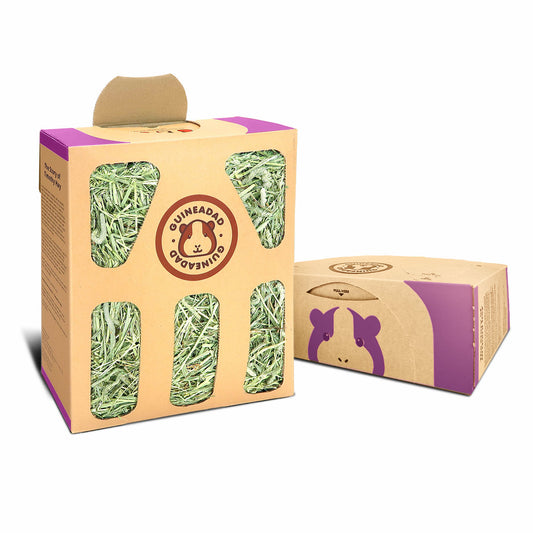One of the most common reasons that guinea pigs visit the veterinarian, aside from infection, is due to gastrointestinal stasis—also known as GI stasis. This is something that also often affects rabbits and other small animals that are herbivores.
As always, we want to remind you that it’s important to be vigilant and highly observant of your guinea pigs as much as possible. The easiest way for you to ensure that your guinea pig is safe and healthy is by making sure you’re taking notice of any changes in your guinea pig, whether it’s in their behavior, their waste output, and a variety of other factors.
There are a few reasons why GI stasis could be occurring, and we want to tell you how to identify the signs and what your options are when it comes to treatment.
What is GI stasis?
If a guinea pig is healthy, their entire digestive tract should be constantly working and moving, whether it’s the stomach or the intestines. It’s important that they’re constantly working, especially for guinea pigs because they rely heavily on their digestive system in order to fully absorb all the nutrients from their food. Guinea pigs are one of the animals that need to eat their own poop, called caecotrophs, in order to fully get all the benefits from their diet.
When the peristalsis, or muscular contractions of the guinea pig stomach and intestines slow down, or stop completely, it’s called gastrointestinal stasis, or GI stasis. It's a term that is used for any different kinds of disorders that cause the slowing or stoppage in the GI tract. It’s sometimes referred to as ‘gut stasis’ as well. When it comes to this slowed and cease of movement in the GI tract, this can become life-threatening for your guinea pigs, and in the worst cases, it will be fatal.
What are the symptoms of GI stasis in guinea pigs?
There are a few things to look for when determining whether your guinea pig is suffering from GI stasis. It’s important that these things are identified as quickly as possible, and then acted upon quickly! GI stasis is a condition that is dangerous and can quickly become fatal if it goes untreated.
Your guinea pig might experience decreased appetite, and may even only accept treats, or they might have a complete lack of appetite and won’t eat at all. The reduction in their waste output can be a sign of GI stasis as well, and if the fecal pellets are small and dry, this can be a cause for concern. As GI stasis goes on, guinea pigs may show signs of lethargy, weakness, and even the inability to walk.
It’s important to note that when guinea pigs don’t eat and/or don’t produce poop for 24 hours, it’s considered an emergency situation.
You should never wait too long to act when you notice any changes in your guinea pig’s eating habits. Make sure you call and consult your veterinarian as soon as possible, and start hand feeding your guinea pig their mashed-up pellets or some other kind of gruel fed with a syringe, and make sure to syringe feed them water as well.
Water is necessary for your guinea pig to produce proper poop that isn’t dry and small.
What causes GI stasis in guinea pigs?
GI stasis will occur anytime guinea pigs stop eating for whatever reason, whether it’s because it hurts or is uncomfortable for them to eat, they’re stressed or depressed, or a multitude of internal issues including malfunctions of the kidney or liver.
Malocclusion
One of the causes for discomfort when eating is malocclusion, or a condition in which a guinea pig’s teeth are not worn properly and have overgrown. It’s important to note that guinea pig teeth are constantly growing and in order to properly wear them down, they need to be eating properly in the first place.
One of the biggest portions of their daily diet is made up of hay, and it’s not only the fiber that keeps their digestive system on track, but it’s chewing on the hay itself that will help wear down their teeth to keep up with the growth. Because you mostly only see your guinea pigs front teeth, it’s commonly mistaken that only those teeth are always growing, when in fact it’s their front and back teeth!
In many cases, the back teeth will be overgrown first which will affect your guinea pig’s overall ability to eat, which then leads to the front teeth not being able to be worn down as they should be. Oftentimes, the back teeth on either side of the lower part of their mouth will grow towards each other and even over the tongue, meanwhile the upper back teeth will grow sideways towards their cheeks, affecting the overall normal chewing ability of your guinea pig.
There are some signs to look out for when determining whether your guinea pig has malocclusion. Guinea pigs with this condition will have their mouths slightly open, due to the overgrown condition of their teeth and their inability to close their mouths because of it. This can lead to drool that wets the hair on their chin. You can also identify this condition by watching the way that your guinea pig chews.
If the way your guinea pig is chewing seems like they’re trying to get something unstuck, if they seem to have exaggerated ear movements when chewing, or little pieces of their food consistently drop out of their mouth as they’re chewing, these may be some reasons for some concern!
In order to get your guinea pig properly diagnosed as soon as possible and as accurately as possible, make sure that you take your guinea pig to either your veterinarian, or a veterinarian dentist that has experience treating guinea pig teeth.
Treating guinea pigs with malocclusion usually involves the filing or clipping of their teeth while the guinea pigs are under anesthesia. However, because the front teeth can split or become fractured during clipping, filing the teeth is usually the chosen option. It’s important that the teeth aren’t filed too short, which is why it’s important that the medical professional that you choose for them has experience performing this procedure properly.
In some cases, the guinea pigs will need to get this filing procedure done a few times gradually over weeks. The overall goal is to get your guinea pig’s teeth back into a state where eating is comfortable for your guinea pig again.
There are many different health issues that can cause a lack of appetite, which will then lead to the stopping of your guinea pig’s GI tract. Things like liver and kidney malfunction, also known as renal failure, or even cancer that has gone undetected can cause your guinea pig to not want to eat.
It’s important that something like malocclusion and the other health issues are caught earlier on so something can be done immediately to treat them for these health issues and prevent something like GI stasis from happening.
Stress and depression
Guinea pigs are quite anxious animals, and it doesn’t take much to stress these little fur balls out! This is why it’s important for you as the piggy parent to reduce the amount of stress your guinea pig experiences as much as possible.
Believe it or not, animals are just as capable of being depressed as humans are. In guinea pigs, things like stress and depression have a huge impact on your guinea pig’s ability to eat, and their overall health as well.
Depression can occur when your guinea pig is bored and isn’t stimulated enough, and can occur when your guinea pig is lonely and doesn’t have any piggy companions. This is why it’s always recommended that guinea pigs live in groups, or at least in pairs.
Whether your guinea pig begins to eat less or stops eating completely, it’s important to make necessary changes as quickly as possible to encourage them to eat again.
If you notice that your guinea pig isn’t eating enough, you should be hand feeding them as soon as you take note of the change in appetite. Waiting too long could be detrimental to your guinea pig’s GI tract, and their life, so make sure that you’re hand feeding your piggy their mashed up pellets using a syringe as soon as possible. Make sure you’re also syringe feeding your guinea pig water as well to ensure they’re properly hydrated.
Improper diet
This condition can be caused by other factors, such as improper diets and lack of hydration. Sometimes even a minor change in a guinea pig’s diet can trigger GI stasis to happen. It’s important to make any changes in diet very slowly and gradually in order to decrease the chances of something like this happening.
Generally, a guinea pig’s diet should include large amounts of hay, a small amount of pellets, the inclusion of a cup of fresh vegetables, and plenty of water. Sometimes, GI stasis can occur when guinea pigs are being fed too much of their pellets, and not enough hay. It’s important that their hay is being provided in unlimited quantities.
Hay is one of the biggest, if not the biggest sources of fiber in your guinea pig’s diet. Fiber is necessary for proper digestion of your guinea pig’s overall diet (hay, pellets, vegetables, etc.), and for your guinea pig’s body to move food and waste in and out to make room for more food and waste. This constant cycle of movement in their digestive tract and their overall GI tract is vital for keeping them healthy.
When there is not enough fiber in your guinea pig’s diet to keep the GI tract moving, this is when GI stasis occurs. It’s important to note that GI stasis can cause digestive gasses to build up and to be unable to escape, which can lead to dangerous bloating as well.
There should be a large supply of it in their cage at all times in order to encourage them to eat it. It’s best for them to be provided hay in a feeder of some sort that keeps it off of the ground so they don’t soil it with pee or their poop. For this, we recommend utilizing our GuineaDad Hay Box or GuineaDad Hay Bar options to reduce hay waste and to make supplying large amounts of hay to your guinea pigs simple and easy.
It’s also important for your guinea pig to not consume food with too much sugar. This means that while guinea pigs require a cup of fresh produce in their diet to provide the proper amount of nutrients that they need, this serving size should be made up mostly of leafy green vegetables. Fruits should only be provided on rare occasions and in very small amounts. (One or two blueberries, a single raspberry, a half-inch slice of banana, etc.)
For more information on what kinds of produce to feed your guinea pig, as well as how much and how often, check out our Vegetable Master List and our Fruits Master List.
Fruit contains a lot of sugar, which is why guinea pigs love it so much. Unfortunately, guinea pigs are unable to properly break down and digest sugars the way that humans can, which is why too much sugar can cause issues in their digestive tract.
If you’re feeding your guinea pig too much of their treats, in comparison to the rest of their normal diet, this can cause digestive problems as well. Treats should be treated as such, and they should never be used as a meal replacement.
When your guinea pig isn’t eating properly, they also won’t be fueled up for any kind of proper exercise. It’s important that your guinea pig is able to stay active—this is a big part of what keeps your guinea pig healthy throughout their lives at any age. Physical activity and lots of exercise are some of the key components of extending your guinea pig’s lifespan.
How to treat GI stasis in guinea pigs
We keep emphasizing this, but it’s important to get your guinea pig to your veterinarian immediately, or as soon as possible! Not only is GI stasis extremely dangerous to your guinea pig’s life, but it can also be an indicator of some other underlying issues that are just as concerning or even more so.
Your veterinarian will be able to do a full physical examination as well as run tests in order to accurately diagnose your guinea pig, and will come up with a treatment plan.
Treatments will depend on how serious the situation is, and can range anywhere from fluid administration utilizing different methods, to stimulating the GI tract with medication until it starts working on its own again, and other options. One of the more common treatments is usually feeding your guinea pig mashed up pellets or some other nutritional gruel through a syringe.
Your guinea pig may even be prescribed other kinds of medications to help with any kind of discomfort in their abdominal region due to any bloating that may have occurred due to the stasis. It’s important to remember that even when you’re able to take your guinea pig home and continue treatment at home, you follow all directions given to you by your vet.
Continue giving your guinea pig their medication as instructed for the full period of treatment prescribed by your vet, even if it seems like your guinea pig has made a full recovery!
Prevent GI stasis in your guinea pig!
We’re always emphasizing the importance of making sure that you’re keeping a close eye on your guinea pig and taking note of any changes that you notice. Sometimes noticing one little thing that seems insignificant at the time can make all the difference when it turns out to be a sign of an underlying health issue that is more serious.
The sooner you’re able to get your guinea pig the treatments that they require, the more you’re able to ensure that your guinea pig will be able to recover properly and quickly.
Want to learn more about how to keep your guinea pig happy and healthy?
Check out these blog posts about hay for guinea pigs, and the complete guide to cages for guinea pigs!
















